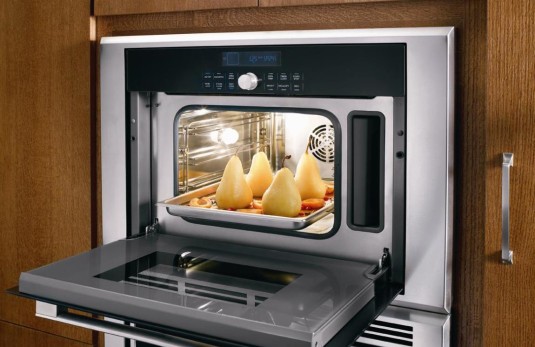Convection is a term that tends to get lost among the masses when it comes to cooking with traditional ovens. Most of us have learned to cook from our mothers, fathers, and grandparents before us, causing us to become routinely comfortable with traditional oven settings. This of course, is no fault of our own as tradition ultimately overtakes innovation when it comes to matters of food and family. While there’s no question you can cook a fabulous roast following grandma’s classic recipe, you’d be surprised and how much juicier it comes out by adjusting and becoming familiar with a few new features. Trust us, grandma would be impressed.
What is Convection?
The term “convection” quite simply refers to the use of a fan built within the oven that’s used to circulate hot air around whatever food you’re cooking. This is also commonly referred to as a fan assisted oven. The allure of these modern cooking appliances is their claim to cook food more evenly, preserve moisture and save energy all while saving you cooking time that would be necessary with a traditional oven.
Convection vs. Traditional
While there’s no doubt traditional ovens get the job done as proven true for many many years, they’re mechanics differ in a few vital ways that are resulting in them becoming the outdated way of cooking. Traditional ovens heat food through radiant heat. These are usually produced through coils on the top and bottom of the oven. The air remains stagnant and will continue to raise the internal temperature of the oven until the cooking process is complete. The issue with this process is that since there’s no way for radiant heat to remain at a constant temperature surrounding the food, some areas may be undercooked or cooler than other areas. This results in a roast that may be more rare in the middle but a little too overdone at the ends. Unfortunately with a conventional oven, there’s really no way to adjust this without meticulously selecting the proper cookware and rotating the dish within the oven during the cooking process. However, this causes heat to be let out each time the oven door is open leading to a much longer cook time.
How to Use Convection
Expert chefs recommend adjusting any recipe by lowering the cooking temperature by 25 degrees or shortening the cooking time by a quarter. These factors may need to be adjusted depending on which model convection oven you purchase. It can be a bit of a trial and error process but will ultimately always produce a better meal. Another neat feature of this method is its ability to prevent flavor transfer. This means you can cook several different meals (even fish) without them tasting like each other. This is a real benefit if your strapped for time or feeding a large family.
When Not to Use It
Although there are a multitude of benefits that come with utilizing convection in your cooking, some things are not compatible with process of hot hair circulation. Cakes, soufflés, custards, and quick breads should always be baked using a traditional oven on the bake setting. In this case convection can be almost too much of a good thing, causing dough to rise too quickly.
If your oven has a convection feature that’s never been used, you might want to pick up a book explaining the ins and out’s of convection cooking. There are many available on the market currently and will give you the best tips and tricks to get the most out of your oven. It’s really is a beneficial feature that will always improve your final dish.


« How to Throw A Formal Dinner Party Creepy Halloween Recipes Guaranteed To Scare Your Guests »

